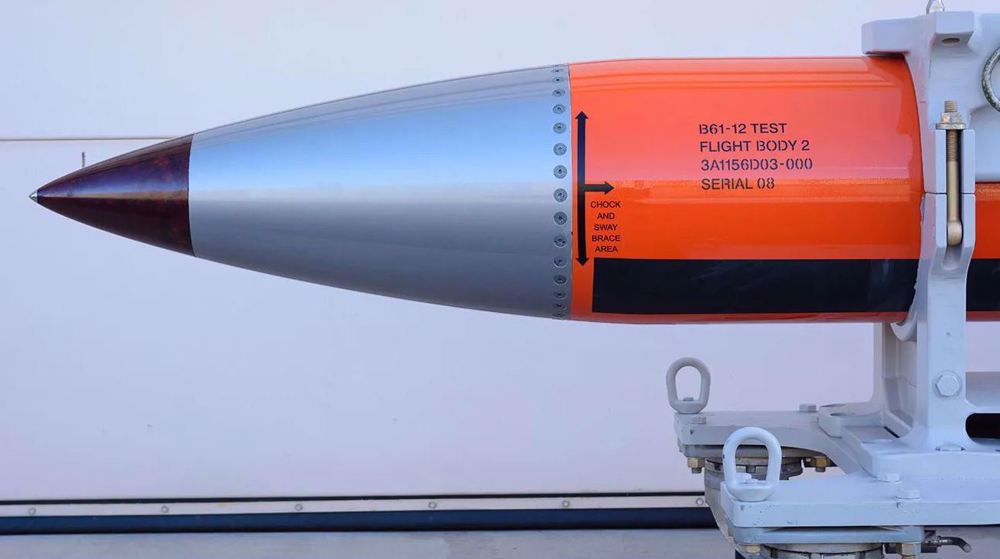Russia sends two nuclear-capable bombers close to Alaska
Russia has flown two nuclear-capable TU-160 bombers to its eastern regions close to the US state of Alaska during a military drill.
According to a statement by Russia's Ministry of Defense issued Wednesday, the two Soviet-era bombers covered a distance of more than 6,000 kilometers (3,728 miles) in over eight hours from their base in Saratov city to Anadyr town in the Chuktoka region, located opposite to the US state.
The flight was part of an exercise that would last until the end of this week and is designed to practice transferring assets from home bases to operational airfields, the statement added.
The TU-160 strategic bomber is a supersonic aircraft that is capable of carrying up to 12 short-range nuclear missiles and of flying 12,000 kilometers (7,500 miles) non-stop without re-fuelling.
Russia has repeatedly used the bomber during its operations against terrorist groups in Syria.
Last year, Russian President Vladimir Putin praised the upgraded version of the bomber, which, according to Tupolev company, is 60 percent more effective than the older version, with significant improvements to its weaponry and navigation.
The statement came a day after two Russian Sukhoi Su-27 fighter jets, convoying a plane carrying Russian Defense Minister Sergei Shoigu, chased away a NATO F-18 fighter jet that tried to shadow the military aircraft over neutral waters in the Baltic Sea.
Shoigu was returning to the capital Moscow from the Russian Baltic region of Kaliningrad, enclosed by Poland and Lithuania, on Tuesday when the incident occurred.
In footage released by the ministry, the NATO fighter jet is seen approaching Shoigu’s aircraft, whose camera filmed the F-18 up close. Moments later, one of the Su-27 Flankers chased away the intruding jet.
Tensions between Moscow and Washington have increased over the last months following US President Donald Trump's withdrawal from a landmark nuclear missile pact with Russia, dubbed the Intermediate-Range Nuclear Forces Treaty (INF).
The INF was signed toward the end of the Cold War in 1987 by the then-US President Ronald Reagan and Soviet leader Mikhail Gorbachev. It banned all land-based missiles with ranges of between 500 and 5,500 kilometers and included missiles carrying both nuclear and conventional warheads.
The treaty, seen as a milestone in ending the Cold War arms race between the two superpowers, led to the elimination of 2,692 missiles from both sides, ridding Europe of land-based nuclear missiles.
In the wake of the US suspension of the INF, Putin also said that the Kremlin had also suspended its obligations under the Cold War-era nuclear pact in “a mirror response” to the US actions.

Yemini forces say they launched attacks on Israeli sites, US warships

Yemeni ballistic missile triggers sirens across Israeli-occupied territories

US nuclear weapons costs projected to soar to $946 billion
Ex-spy chief urges ‘revolt’ against Israeli regime; says Tel Aviv must be ‘stopped’
VIDEO | Press TV's news headlines
VIDEO | Paris hosts ‘end famine’ rally in support of Gaza
Global reactions, offers of assistance pour in after huge deadly explosion in S Iran
Iran pres. stresses collective, effective fight against terrorism in calls with India, Pakistan PMs
VIDEO | Iran-US indirect talks
Iran declares holiday in Bandar Abbas port as fire still raging
VIDEO | NY protesters demand end to genocide on Global Day for Gaza












 This makes it easy to access the Press TV website
This makes it easy to access the Press TV website